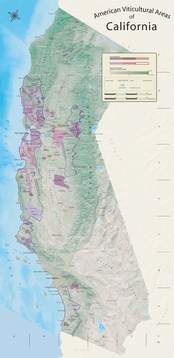When was the last time that the word “refreshing” came to mind when drinking a glass of California white wine? In my case at least, it’s been quite a while. “Rich,” yes. “Lush,” certainly. But refreshing? All too rarely.
I thought of this when reading Eric Asimov’s column in last Wednesday’s New York Times. He was addressing southern Italian whites, and he began by declaring that their radically improved quality constitutes “one of the more dramatic examples of how the world of wine has changed in the last twenty-five years.” Why, I started to wonder, hasn’t California been part of that change?
wonder, hasn’t California been part of that change?
Other places certainly have been. Vibrant, refreshing whites are coming today from places no one ever before imagined could produce such wines. Southern Italy is a great example, but so too are Sicily and Sardinia, as well as Rueda in Spain, parts of the Languedoc in France, both the mainland and the islands in Greece, Salta in Argentina, the Western Cape in South Africa, and many more.
The terroirs in these regions are very different, but all are demonstrating the capacity to grow grapes that can yield dynamic and refreshing white wines. Acids are kept high; oak plays little or no role; and the wines taste delicious. Whether made with widely recognized grape varieties such as Sauvignon Blanc, or with more obscure because usually local ones like Fiano di Avelino or Verdejo, these wines share a stylistic profile that makes them ideal for warm weather drinking.
Though exceptions certainly exist, California by and large is not producing wines in this style. Perhaps it’s the climate? After all, conventional wisdom long has had it that most prime grape growing regions in the Golden State are too warm for high acid, light-bodied, refreshing wines. Yet the emergence of all these new wines from elsewhere challenges that line of thought. After all, southern Italy, like central Spain and Mediterranean France, can be swelteringly hot in the  summer. Moreover, California used to produce wines in this style. (Anyone remember old-fashioned, generic “chablis?” It wasn’t complex or sophisticated, but it did taste crisp.)
summer. Moreover, California used to produce wines in this style. (Anyone remember old-fashioned, generic “chablis?” It wasn’t complex or sophisticated, but it did taste crisp.)
More than anything else, modern winemaking technology, particularly ever-improved temperature control equipment, is what has enabled winemakers in other warm locales to fashion such refreshing white wines. California vintners clearly have access to it, so the problem can’t be a lack of either equipment or know-how.
No, it’s evidently a lack of will. With an almost entirely domestic market, California vintners apparently feel little need to diversify stylistically. Particularly over the past twenty-five years, the history of Golden State white wine has involved experimenting with different grape varieties, but by and large aping a style already popularized with Chardonnay. This doesn’t mean always using new oak barrels, or inducing malolactic fermentation, or retaining residual sugar. It does, however, mean, emphasizing fullness and richness at the expense of vivacity and verve.
To my mind, that’s a shame. A generation ago, the state’s vintners played a leading role in the global white wine revolution. Today, I’m sorry to say, they’re lagging behind.
* * *
Agree or disagree? Write to me at plukacs@verizon.net
4
